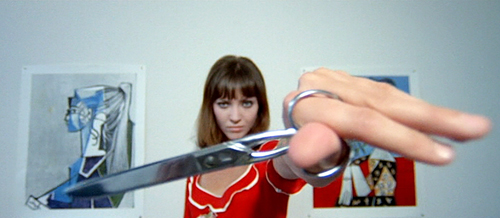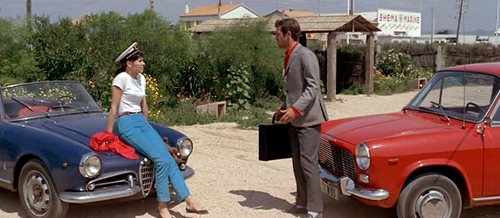A column for Caiman Cuadernos de Cine, submitted March 19, 2022. — J.R.
While preparing a book that collects some of my film criticism, jazz criticism, and literary criticism and tries to correlate certain shared formal attributes of the three corresponding arts, I’ve been lamenting the absence of recordings of the very jazzy and literary lectures on film that Manny Farber gave at the University of California, San Diego in the 1970s, some of which I attended. They seemed improvised, even though he spent a long time preparing them.
Sometimes he delivered portions in voiceovers while the film was still running, as if having an argument with the filmmaker. For those who can now read Farber In Spanish, his breezy, blustery style also seems Influenced both by jazz and the writers he read, although the fact that he hung out with East Coast action painters also left a mark. In short, his writing and his lectures were both performative events full of suspenseful moments and humorous surprises.
So is Jean-Pierre Gorin’s A “Pierrot” Primer, a DVD extra on the 2008 Criterion edition of Godard’s Pierrot le fou, which quotes Farber but converts the Farber delivery into a style entirely Gorin’s own. Oscillating in his voiceovers between explication and poetic flights of fancy, freezing on single frames and repeating some clips so he can expand on certain ideas, backtracking the way a reader of a text might do, Gorin dances with the film in a manner that makes his apparently written text seem improvised. Even the periodic effect of overload matches that of the film he’s confronting. When he briefly bows out to let Godard’s soundtrack take over, it’s a bit like he’s “trading fours”—exchanging four-measure improvs—with his former collaborator.
Many Anglo-American film critics of my generation think their art is dying. I persist in believing they’re looking in the wrong places. The two decades of Serge Daney’s writing for Cahiers du Cinéma are belatedly being published in English this summer, but comparable translated collections of Shigehiko Hasumi and Frieda Grafe have yet to appear. Yet we already have audiovisual criticism by Joan Neuberger and Yuri Tsivian on Ivan the Terrible that in certain respects goes beyond their excellent books on the same film. More recently, the provocative online videos of Kevin Lee and Chloé Galibert-Laîné as well as the many audio commentaries of Nick Pinkerton and Imogen Sara Smith are packed with information and insight. Whether performative criticism exists in the Spanish languages is beyond my grasp, but as I’ve suggested above, the literary jazz solos of Farber on the page and Gorin wrestling with Godard propose exciting new directions in this art that have only begun to be explored.




